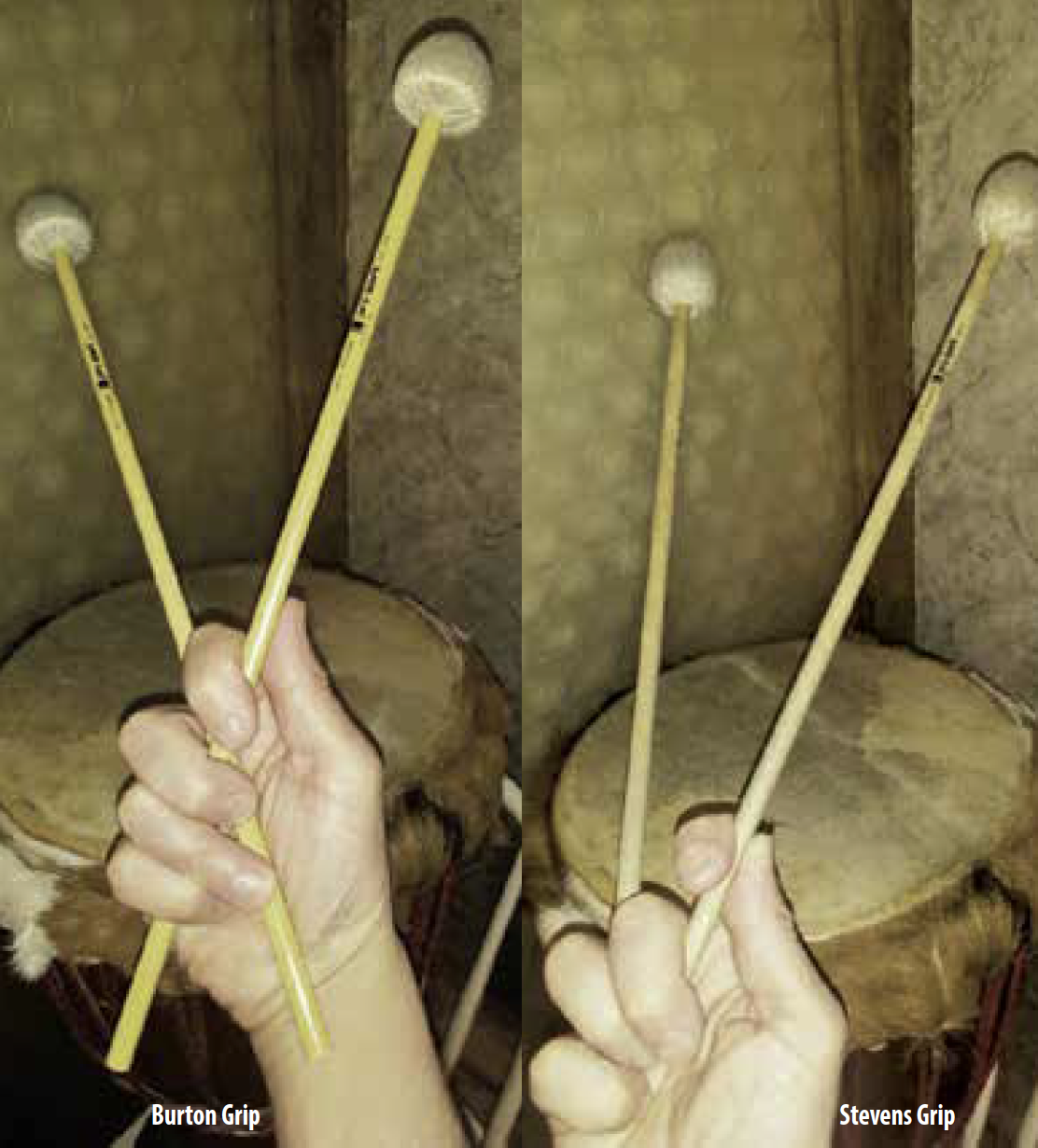 Playing with four mallets on mallet instruments can be very intimidating at first.
Playing with four mallets on mallet instruments can be very intimidating at first.
There are two four mallet grips. I will describe and discuss both of them, as well as help your student in the early stages to becoming a four-mallet virtuoso.
If you have your student face their palm upwards, the inside mallet crosses over the outside mallet. The end of the outside mallet should be placed between the index and middle finger.
The outside mallet is also anchored down with the fourth finger, pressing into the palm. This inside mallet crosses under the outside mallet and it is controlled by the thumb and the index finger.
By spreading the thumb and index finger farther apart, your student can widen the interval. By bringing them closer together, the interval can be smaller. When playing linear lines with the right hand, the mallets should form a 90-degree angle. The inside mallet is stationary, and the outside mallet strikes the instrument with a wrist stroke movement, as if your student is “waving goodbye.”
The inside mallet should be stationary with as little movement as possible. The grip in the left hand is held the same way. But when playing linear lines, the mallets should be at a 45-degree angle.
The outside mallet should remain completely still. The inside mallet strikes the instrument and the motion is different than the right hand in that the left hand rotates as if your student is turning a door knob. Your student may practice the motion by doing the door knob turn with the left and the waving motion with the right hand. Playing with one hand at a time and holding the mallet that should be stationary with the free hand is a good way for your student to learn muscle control for this grip. The more “still” the other mallet is, the more control your student has with this grip. When playing chords with the Burton Grip, make sure your student is hitting the edge of the sharp and flat bars. This will provide a good sound and make it easier for them to stretch out the intervals.
The Burton grip is used for all types of playing and is the main jazz grip. The advantage of the Burton Grip is that you can play fast linear lines quite easily and because the mallets are crossed, your student can get more power and volume out of the instrument due to the fact that vertical wrist and forearm muscles can be utilized.
Introduction to Jazz Vibes by Gary Burton is a great book for this grip. I also recommend rattan mallets for this grip because the mallets have ‘bend’ to them. This provides a quality vibe sound and it catches the rebound off of the instrument very effectively.
The second grip is the Stevens Grip, or also known as the Modified Musser Grip. In this grip, the two outside mallets on each hand are gripped with the little and ring fingers. The inside mallets on both hands are pressed into the flesh of the hand at the base of the thumb. Interval changes are made by moving the inside and outside mallets independently of each other. The intervals can be controlled by rolling the inside mallet on top of the index finger with the thumb on top controlling it. The thumb should always face the sky as the hands will be turned sideways as if your student is casting a fishing pole. The outside mallet is moved primarily with the little and ring fingers. When learning muscle control for mallet independence with the Stevens Grip, the “door knob” turn I discussed earlier is proper for both hands. Having your student practice this motion while holding the mallets, even on a surface such as a table, will help develop muscle control.
The advantage to the Stevens Grip is that the muscles can be very relaxed, and your student can play with more finesse. The fact that the mallets aren’t crossed allows for more independence, meaning your student can play multi-mallet arpeggios and one-handed rolls quite easily once the grip is mastered. This grip is mainly used in orchestral style marimba music. I recommend Method of Movement for Marimba by Leigh Howard Stevens. I also recommend birch mallets for the Stevens Grip, as it will provide more control for your student.
Both the Burton and the Stevens grip should be used for different styles of playing. For jazz vibes and outdoor marching percussion that does not have amplification, I recommend the Burton Grip. For orchestral marimba music that requires a softer touch and virtuosic moving lines, the Stevens Grip will work much better. They are both excellent grips which can be advantageous in different situations. Teaching your student how to utilize both grips in different musical situations will make him and her a very versatile mallet player.
In 2016, The Huffington Post called Kevin Lucas “the most talented percussionist since Lionel Hampton, Ginger Baker, and Tito Puente.” He has been nominated for 38 music industry awards for his Echoes in the Sand album, and he won the 2016 AmericanSongwriting Awards. m.huffpost.com/us/entry/10960000





























